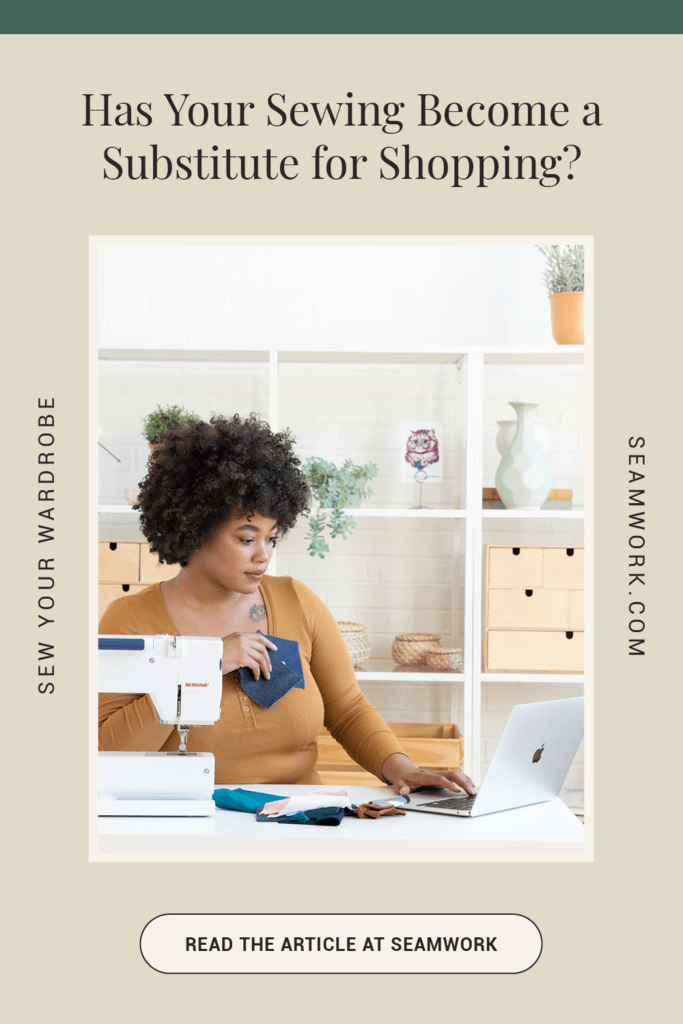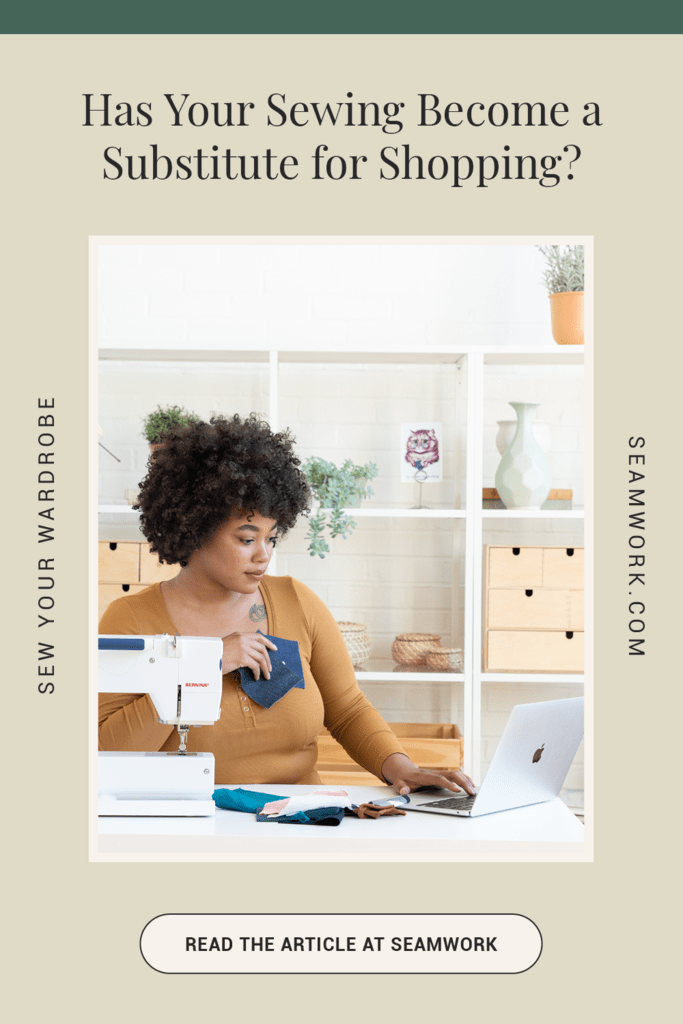Sewing your own clothes is one ingredient of the antidote to fast fashion. Instead of heading to the dressing room in a store, you’re in your own home trying on the things you’ve made. Rather than shopping seasonal sales, you’re searching through pattern catalogs. As a result, you’ve severed a part of your connection to the fast fashion cycle.
But what happens if you feel the pressure to sew new things just as much as you feel the pressure to shop those seasonal sales? What if you’re still trying to stay on top of new trends each month—and it’s not making you feel good about your personal style? You might end up feeling like you want more than you need. Your sewing has become a substitute for clothes shopping.
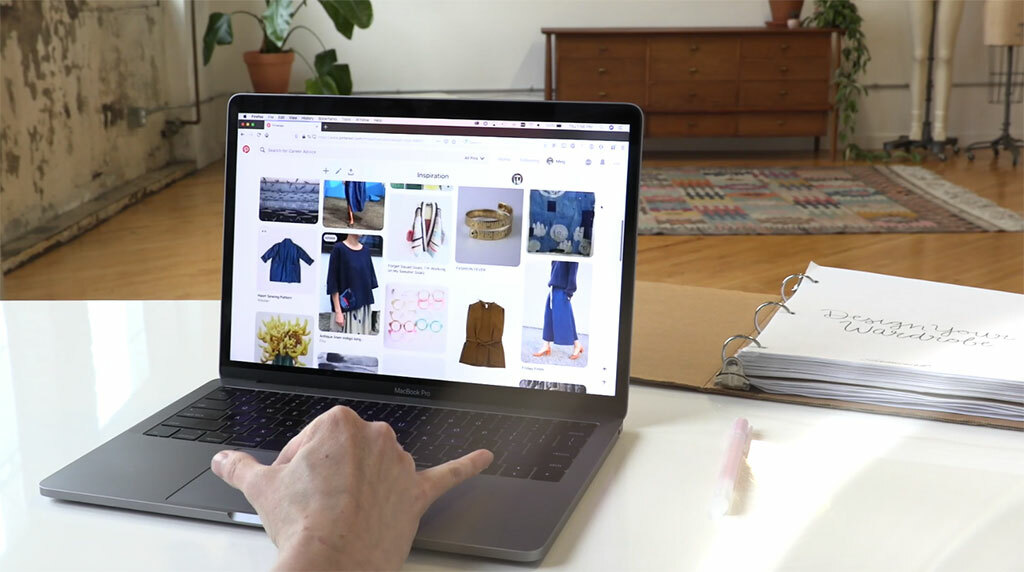
The issue here isn’t that you need to stop sewing and pare your wardrobe to ten items or less. Making things is fun! Rather, the issue is that you want to sew the things you’ll actually wear. Then you’re not eternally chasing the next trend to make you feel more like you —which might not ever happen, by the way. Instead, you’re in touch with your core style, and you know what you’re looking for in a project.
To address what happens when “buy, buy, buy” turns into “sew, sew, sew,” you can use some practical strategies and tactics to help you edit. Sure, you still want to make all the cool things you love to wear and keep having those creative ideas. But editing is the next creative step. So, how do you edit all of your ideas, so they fit who you are as a person without leaving you always wanting more?
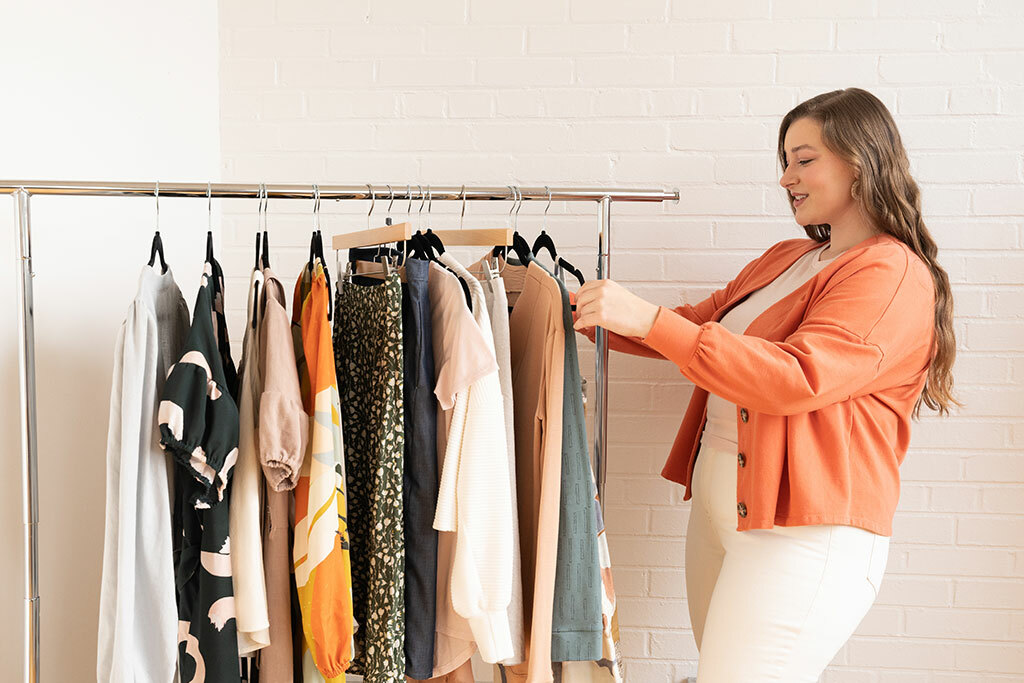
Here are five ways to stay focused in a world of bright and shiny new sewing patterns and fabric.
Recognize your triggers
When the tell-tale signs of fall start to arrive, you might suddenly want to sew all the hoodies and coats. Or when the ground finally thaws, you might want to stuff your closet with dresses.
Or maybe you just started a new job, and you’re panic-sewing an entirely new wardrobe. If you start feeling the need for more stuff or suddenly want to completely transform your wardrobe, look at what else is happening.
Learn how to recognize the things that trigger your desire to want to sew a bunch of new things. It helps you understand what’s happening when the next time rolls around. For example, it’s ok to admit that you tend to go a little overboard in autumn, buying all the sweater knits and flannel for button-ups so you can have a completely different wardrobe than you had before. But, if you recognize it, you can tone it down.
Here are some common triggers that the fashion industry tends to stoke:
- Seasons
- Trends
- Body changes
- Life changes
- Holidays
- Influencers
- Sales
You’ll notice some trends in these triggers. Some of them are based in exclusivity, making you feel like you’re missing out. Others are time-based, which can easily be exacerbated by sales. And many of these are related to stress—insecurity is a powerful motivator for fashion.
Figure out your triggers, and you will at least be more aware. You don’t need to go overboard trying to pick apart the psychology. Just take note of what pushes you into a cycle. Then you’re ready for the next step.

Set up a system to plan and prioritize
A process to prioritize your ideas and projects can really help you focus. There are plenty of systems out there, so you don’t need to invent anything complicated.
Here are some prioritization tools you can use:
-
Design Your Wardrobe: Our popular course walks you through the steps to plan your wardrobe for the season. You’ll create a color palette with actual fabrics, design outfits for yourself, and develop a sewing queue. It’s free for Seamwork members. -
Seamwork’s free planner: Our free downloadable planner is like Design Your Wardrobe light. -
A fabric Venn diagram: In this article, you’ll learn six tips for buying fabric you’ll use. It helps you create a fabric Venn diagram to know what you need. -
A short-term and long-term queue: You’ll read more about wild cards below, but this is a simple way to prioritize your sewing to allow for long-term plans and surprise projects that pop up.
Keep a list of what’s missing from your wardrobe
If you want to focus your wardrobe, look for what’s missing. Fill in wardrobe gaps. If you already have a garment like it, don’t sew it. Instead, look for what’s missing.
You can start a note on your phone to keep track of your wardrobe gaps. Or, if you’re a more visual person, you can create a Pinterest wishlist. Read this article (it also has a video) to learn some tips for maintaining effective Pinterest boards. There’s an idea for creating a wishlist to help you stay on top of your wardrobe goals.
Embrace wild cards
You don't have to be a sewing robot. It’s important to give yourself room for exciting and trendy pattern releases or fabric lines. You can call these last-minute projects wild cards. Wild cards are the projects that arise after you've made your plan for the season. And if you give yourself some room to have those little spontaneous creative moments, you’ll be able to stay on top of your long-term plans but still have fun.
Like mentioned above, one way to make space for wild cards is to have a short-term and long-term list for your projects. You can read about this method in the article Taming the Project Queue.
Keep your wardrobe staples—the things you know will fill gaps in your wardrobe—on your long-term list. Then, save a few spots on your short-term list for spontaneous projects that pop up, either because you found some special fabric or a new pattern that you love.
For example, if you plan to make ten garments in the next six months, three of those could be wild cards. Or, if wild cards drive you, your queue could be seven wild cards and three wardrobe staples.
It can backfire in different ways if you’ve reached a point where you've tried to add too much structure to your creativity. You don't want your plan to become an obstacle to your sewing. Wild cards are such a valuable tool here. If you’re feeling stuck, maybe you just need a wild card.
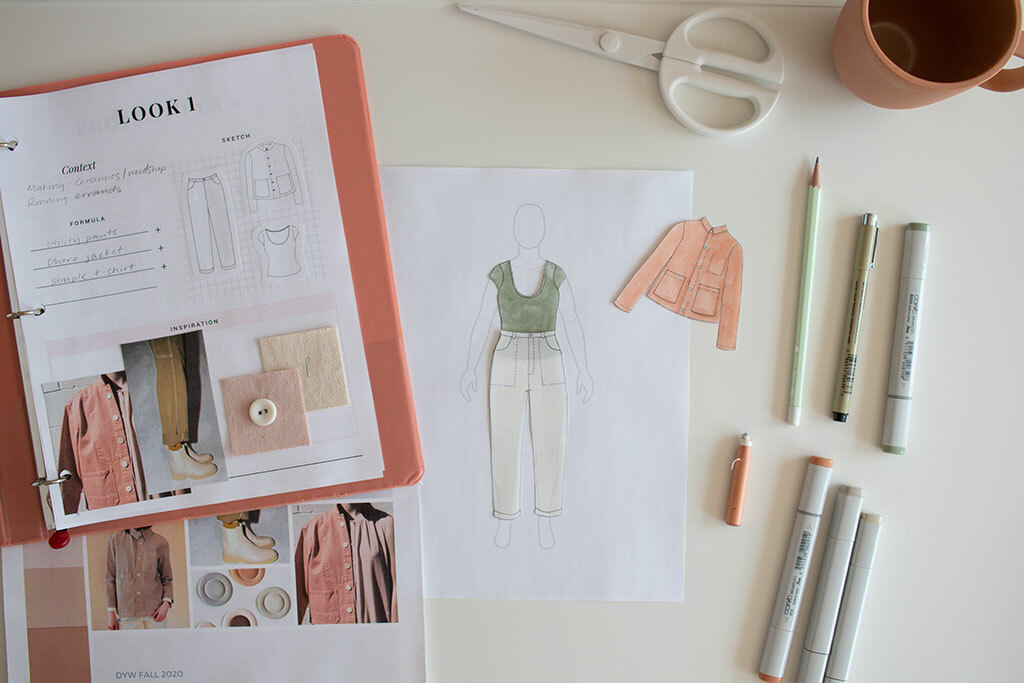
Define your core style
Finally, it’s so worthwhile to know your core style. Style is something that evolves. The trick with planning your sewing is making sure you're allowing for that evolution, but at the same time, not abandoning who you are to create things that are just trendy or that seem exciting at the moment.
So what is your core style? Your core style is more than the silhouettes and colors you love to wear. It’s also tied closely to your identity. Your body, family, job, and values are all embedded in your personal style.
Here are some tools to help you explore your core style
-
Style Workshop: If you need help defining your core style, our Style Workshop PDF is free for all Seamwork members. It walks you through 10 exercises to focus your style. -
Explore Yourself and Explore Your Style: This article shares three elements that can help you simplify the process of creating a custom wardrobe. -
Finding Your Style Lens: This article shares two simple tools to help you find your own style perspective.
Fast fashion sets a trap for you to reinvent yourself constantly. But knowing your core style can help you edit, filter, and only sew things you know you will love to wear. The trick is to find a balance between how your style is changing, how you’re personally changing, and what is core to who you are. Then your sewing won’t be a substitution for clothes shopping. Instead, it will be a powerful way for you to use fashion for self-expression.
Love the article? Pin it for later.
